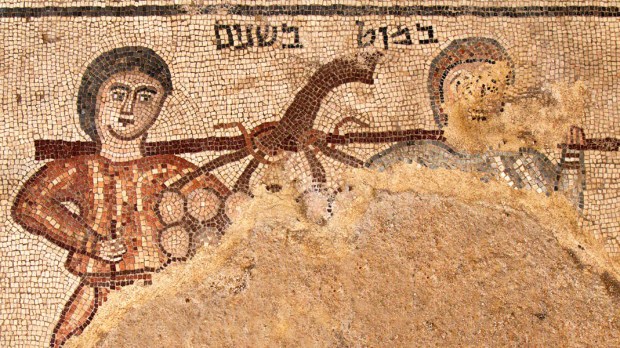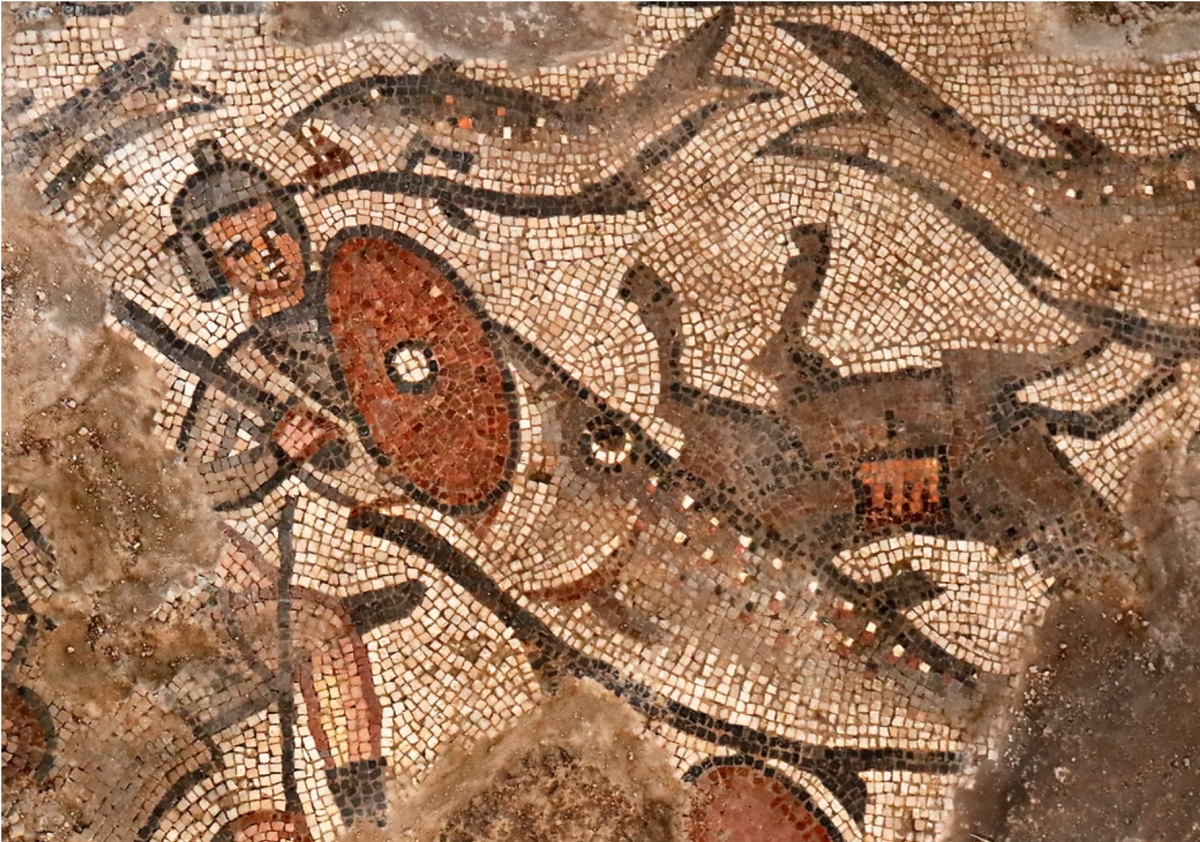Colorful mosaics and painted columns discovered beneath the earth of Israel’s Galilee offer clues to Jewish life under Christian rule in the 5th century.
Archaeologist Jodi Magness of the University of North Carolina at Chapel Hill recently announced new discoveries at a site she’s been excavating for the past seven years. Her team of specialists and students have found a number of mosaics in the ancient synagogue at Huqoq, an ancient village in Israel’s Lower Eastern Galilee, about three miles west of Magdala and Capernaum (where Jesus taught in the synagogue).
Magness said the discoveries indicate that residents of Huqoq flourished under early Christian rule, “contradicting a widespread view that Jewish settlement in the region declined during that period. The large size and elaborate interior decoration of the Huqoq synagogue point to an unexpected level of prosperity.”
“The mosaics decorating the floor of the Huqoq synagogue revolutionize our understanding of Judaism in this period,” she said. “Ancient Jewish art is often thought to be aniconic, or lacking images. But these mosaics, colorful and filled with figured scenes, attest to a rich visual culture as well as to the dynamism and diversity of Judaism in the Late Roman and Byzantine periods.”
In fact, not all of them are biblical. In 2013, 2014 and 2015, the team discovered a Hebrew inscription surrounded by human figures, animals and mythological creatures, including cupids, and the first non-biblical story ever found decorating an ancient synagogue. There is some debate about that image, but it might be a depiction of the legendary meeting between Alexander the Great and the Jewish high priest.
The first mosaics in the Huqoq synagogue were discovered by Magness’ team in 2012. Since then, Magness, director of the Huqoq excavations and Kenan Distinguished Professor of Early Judaism in the department of religious studies in Carolina’s College of Arts & Sciences, assisted by Shua Kisilevitz of the Israel Antiquities Authority and Tel Aviv University, have uncovered additional mosaics every summer. This year, the team’s specialists and students focused their efforts on a series of mosaic panels in the north aisle. Magness said this series is part of the richest, most diverse collection of mosaics ever found in an ancient synagogue.
Along the north aisle, mosaics are divided into two rows of panels containing figures and objects with Hebrew inscriptions. One panel labeled “a pole between two” depicts a biblical scene from Numbers 13:23. The images show two spies sent by Moses to explore Canaan carrying a pole with a cluster of grapes. Another panel referencing Isaiah 11:6 includes the inscription “a small child shall lead them.” The panel shows a youth leading an animal on a rope. A fragmentary Hebrew inscription concluding with the phrase “Amen selah,” meaning “Amen forever,” was uncovered at the north end of the east aisle.
During this eighth dig, the team also continued to expose a rare discovery in ancient synagogues: columns covered in colorful, painted plaster still intact after nearly 1,600 years. They may be “imitation marble” columns, but that does not necessarily indicate a lack of means. Much in the manner of King Herod decorating his palaces with painted faux-marble frescoes, the columns and gorgeous mosaics point to a wealthy, flourishing 5th-century Jewish settlement, Magness told the Times of Israel.
“In general, unless you’re in a really important church in the Byzantine period, you won’t find marble, rather this common local alternative,” she said.
The mosaics have been removed from the site for conservation and the excavated areas have been backfilled. Excavations are scheduled to continue in the summer of 2019.


